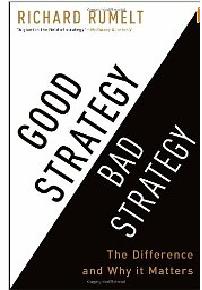|
|
 |
|
|
 |
Industrial
Growth Recovers at 5.9% in Nov 2011
Source:
MINISTRY OF STATISTICS AND PROGRAMME
IMPLEMENTATION – January12, 2011
1. The Quick Estimates of Index of Industrial Production (IIP) with base 2004-05 for the month of November 2011 have
been released by the Central Statistics Office of the Ministry of Statistics and Programme Implementation. The General Index
for the month of November 2011 stands at 167.4, which is 5.9% higher as compared to the level in the month of November 2010.
The cumulative growth for the period April-November 2011-12 stands at 3.8% over the corresponding period of the previous year.
2.The Indices of Industrial Production for the Mining, Manufacturing and Electricity sectors for the month of November
2011 stand at 127.6, 177.8 and 145.6 respectively, with the corresponding growth rates of (-) 4.4%, 6.6% and 14.6% as compared
to November 2010 (Statement I). The cumulative growth in the three sectors during April-November, 2011-12 over the corresponding
period of 2010-11 has been (-)2.5%, 4.1% and 9.5% respectively, which moved the overall growth in the General Index to 3.8%.
3. In terms of industries, seventeen (17) out of the twenty two (22) industry groups (as per 2-digit NIC-2004) in the
manufacturing sector have shown positive growth during the month of November 2011 as compared to the corresponding month of
the previous year (Statement II). The industry group ‘Publishing, printing & reproduction of recorded media’
has shown the highest growth of 69.1%, followed by 41.8% in ‘Medical, precision & optical instruments, watches and
clocks’ and 29.3% in ‘Food products and beverages’. On the other hand, the industry group ‘Electrical
machinery & apparatus n.e.c.’ has shown a negative growth of 38.7% followed by 8.6% in ‘Furniture; manufacturing
n.e.c.’ and 6.4% in ‘Office, accounting & computer machinery’.
4. As per Use-based classification, the growth rates in November 2011 over November 2010 are 6.3% in Basic goods, (-)
4.6% in Capital goods and 0.2% in Intermediate goods (Statement III). The Consumer durables and
Consumer non-durables have recorded growth of 11.2% and 14.8% respectively, with the overall growth in Consumer goods
being 13.1%.
5. Some of the important items of consumer goods showing high positive growth during the current month and thus contributing
to the growth of the overall index for the month include ‘Woollen carpets’ (110.6%), ‘Cashew Karnels’
(97.3%), ‘Newspapers’ (70.9%), ‘Marble Tiles/Slabs’ (65.3%), ‘PVC Pipes & Tubes’ (49.9%),
‘Sugar’ (41.8%), ‘Rice’ (38.4%), ‘Scooter and Mopeds’ (37.6%), ‘Polythene bags including
Hdpe & Ldpe Bags’ (34.7%) and ‘Leather garments’ (33.5%). However, some important items of the consumer
goods are also showing negative growth. These are: ‘Coirs, Mats & Mattings’ [(-) 37.5%], ‘Antibiotics
and It’s Preparations’ [(-) 19.7%] and ‘Gems & Jewellery’ [(-) 17.0%].
6. The other important items showing
negative growth during the month are: ‘Cement Machinery’ [(-)72.1%], ‘Cable, Rubber Insulated’ [(-)65.5%],
‘Colour TV Picture Tubes’ [(- ) 64.0%] , ‘UPS/Inverter/Converter’ [(-)61.4%], ‘Particle Boards’
[(-)30.3%] and ‘Cotton Yarn’ [(-)18.7%].
The official Wholesale Price Index for All Commodities (Base: 2004-05 = 100) for the month November, 2011 rose by 0.1
percent to 156.9 (Provisional) from 156.8 (Provisional) for the previous month.
INFLATION: The annual rate
of inflation, based on monthly WPI, stood at 9.11% (Provisional) for the month of November, 2011 (over November, 2010) as
compared to 9.73% (Provisional) for the previous month and 8.20% during the corresponding month of the previous year. Build
up inflation in the financial year so far was 4.95% compared to a build up of 5.50% in the corresponding period of the previous
year.
PRIMARY ARTICLES (Weight 20.12%): The index for this major group declined by 1.6 percent to 201.1 (Provisional) from 204.3 (Provisional) for the previous
month.
MANUFACTURED PRODUCTS (Weight 64.97%): The index for this major group rose by 0.5 percent to 139.8 (Provisional) from 139.1 (Provisional) for the previous
month.
|
 |
|
|
|
 |
A
Light Wave of Innovation
Gold, titanium and tin oxide hold great expectations for solar panels of the future. Silicon solar
panels used today lose much of the potential energy beamed by the sun as these are not able to absorb infrared rays which
account for more than 50 percent of solar energy received on the earth. However, making solar energy competitive with other
energy sources now seems possible with a newly developed technology. It’s about embedding a nano-antennae into the silicon
of the panel.

Some solar devices, like calculators, only need a small
panel of solar cells to function. But supplying enough power to meet all our daily needs would require enormous solar panels.
And solar-powered energy collected by panels made of silicon, a semiconductor material, is limited — contemporary panel
technology can only convert approximately seven percent of optical solar waves into electric current.
Profs. Koby Scheuer, Yael Hanin and Amir
Boag of Tel Aviv University's Department of Physical Electronics and its innovative new
Renewable
Energy Center are now
developing a solar panel composed of nano-antennas instead of semiconductors. By adapting classic metallic antennas to absorb
light waves at optical frequencies, a much higher conversion rate from light into useable energy could be achieved. Such efficiency,
combined with a lower material cost, would mean a cost-effective way to harvest and utilize "green" energy.
The technology was recently presented at Photonics
West in San Francisco and published in the conference proceedings.

Receiving and transmitting green energy
Both radio and optical waves are electromagnetic energy,
Prof. Scheuer explains. When these waves are harvested, electrons are generated that can be converted into electric current.
Traditionally, detectors based on semiconducting materials like silicon are used to interface with light, while radio waves
are captured by antenna.
For optimal absorption, the antenna dimensions must
correspond to the light's very short wavelength — a challenge in optical frequencies that plagued engineers in the past,
but now we are able to fabricate antennas less than a micron in length. To test the efficacy of their antennas, Prof. Scheuer
and his colleagues measured their ability to absorb and remit energy. "In order to function, an antenna must form a circuit,
receiving and transmitting," says Prof. Scheuer, who points to the example of a cell phone, whose small, hidden antenna both
receives and transmits radio waves in order to complete a call or send a message.
By illuminating the antennas, the researchers were
able to measure the antennas' ability to re-emit radiation efficiently, and determine how much power is lost in the circuit
— a simple matter of measuring the wattage going in and coming back out. Initial tests indicate that 95 percent of the
wattage going into the antenna comes out, meaning that only five percent is wasted.
According to Prof. Scheuer,
these "old school" antennas also have greater potential for solar energy because they can collect wavelengths across a much
broader spectrum of light. The solar spectrum is very broad, he explains, with UV or infrared rays ranging from ten microns
to less than two hundred nanometers. No semiconductor can handle this broad a spectrum, and they absorb only a fraction of
the available energy. A group of antennas, however, can be manufactured in different lengths with the same materials and process,
exploiting the entire available spectrum of light.
When finished, the team's new solar panels will be
large sheets of plastic which, with the use of a nano-imprinting lithography machine, will be imprinted with varying lengths
and shapes of metallic antennas.
Improving solar power's bottom line
The researchers have already constructed a model of
a possible solar panel. The next step, says Prof. Scheuer, is to focus on the conversion process — how electromagnetic
energy becomes electric current, and how the process can be improved.
The goal is not only to improve the efficiency
of solar panels, but also to make the technology a viable option in terms of cost. Silicon is a relatively inexpensive semiconductor,
but in order to obtain sufficient power from antennas, you need a very large panel — which becomes expensive. Green
energy sources need to be evaluated not only by what they can contribute environmentally, but also the return on every dollar
invested, Prof. Scheuer notes. "Our antenna is based on metal — aluminium and gold — in very small quantities.
It has the potential to be more efficient and less expensive."
AUTO EXPO 2012 INDIA
SOME PICS
|
 |
|
|
|
|

Good Strategy Bad Strategy:
The Difference and Why It Matters
Richard Rumelt
Clears out the mumbo jumbo and muddled thinking underlying too many strategies and
provides a clear way to create and implement a powerful action-oriented strategy for the real world
Developing and implementing a strategy is the central task of a leader, whether the CEO
at a Fortune 100 company, an entrepreneur, a church pastor, the head of a school, or a government official. Richard Rumelt
shows that there has been a growing and unfortunate tendency to equate Mom-and-apple-pie values, fluffy packages of buzzwords,
motivational slogans, and financial goals with “strategy.” He debunks these elements of “bad strategy”
and awakens an understanding of the power of a “good strategy.”
A good strategy is a specific and coherent response to—and approach for overcoming—the
obstacles to progress. A good strategy works by harnessing and applying power where it will have the greatest effect in challenges
as varied as putting a man on the moon, fighting a war, launching a new product, responding to changing market dynamics, starting
a charter school, or setting up a government program. Rumelt’s nine sources of power—ranging from using leverage
to effectively focusing on growth—are eye-opening yet pragmatic tools that can be put to work on Monday morning.
Good Strategy/Bad Strategy uses fascinating examples from business, nonprofit, and military
affairs to bring its original and pragmatic ideas to life. The detailed examples range from Apple to General Motors, from
the two Iraq wars to Afghanistan, from a small local market to Wal-Mart, from Nvidia to Silicon Graphics, from the Getty Trust
to the Los Angeles Unified School District, from Cisco Systems to Paccar, and from Global Crossing to the 2007–08 financial
crisis; reflecting an astonishing grasp and integration of economics, finance, technology, history, and the brilliance and
foibles of the human character
|
|
|
 |

